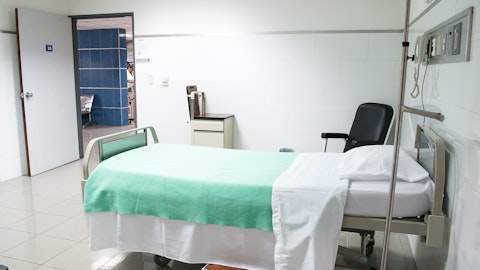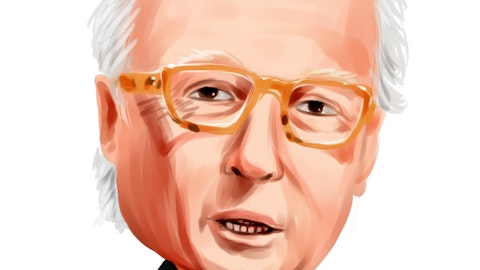Dane Andreeff: Hi, Jonathan, this is Dane. So the savings on the rest of those long-term disability claims according to their actuaries was at $1.6 million. The five patients, some of them averaged three and four years left on it. Some went as far as 20 years on it. But the way they calculate their savings using PoNS Therapy, it was $1.6 million in savings.
Jonathan Aschoff: Okay. And what do you think of that number? Is that a very conservative number? Or is that something that sounds kind of spot on?
Dane Andreeff: I think it’s a very conservative number, Jonathan. Some of these patients were — again, the minimum for the study that specifically crossed in with HealthTech Connex, the minimum event was from two years and beyond. Some of these patients were four and five years away from their traumatic brain injury event like a motor vehicle event or workers’ comp injury, just in general, where TBIs come from. But my belief was the savings were north of $1.6 million.
Jonathan Aschoff: Okay. So some of those were a little confusing in that publication. Did four or five of the nine patients actually returned to work? Or did you — I mean, did just four and one was simply deemed work-ready because it kind of says both. It’s a bit confusing. Or, to PBC, does it not even matter because simply deeming someone work-ready despite not actually returning to any kind of work cuts off the LTD payments?
Dane Andreeff: Yes. So good question. So they closed out five long-term disability claims based off going back to work. So five of them…
Jonathan Aschoff: Actually four only went to work, right?
Dane Andreeff: Actually, five did because their physical disabilities went away. So they were able to go back to work and actually five did go back to work. So there is some ambiguity and timing to that, Jonathan. But I think the number that we focus on clearly was that eight out of the nine deemed, balance and gait was no longer an issue to going back to work. So if you think about the three that haven’t gone back to work yet, there is even more cost savings if they did. But the way the study was done by Pacific Blue Cross, their primary outcome was going back to work so that they could close their long-term disability claims.
Jeffrey Mathiesen: And Jonathan, I think the ambiguity comes from I think four of the five went back to work in the same occupation that they had before. So I think that’s where the ambiguity is, is five went back to work before — actually went back to their same job.
Jonathan Aschoff: Okay. So the eight — you mentioned the eight of nine, the eight that had the gait and balance fixed, but only five of them went back to work. Is that because the three patients that differ between those two groups still had headaches, was that the one reason?
Dane Andreeff: Not necessarily. I mean, if you read into this a little bit, the one thing — one, this is not our study. This is not Helius Medical study. But second, those patients even though they’re able to — and basically saying balance and gait or their physical disabilities are no longer an issue to go back to work, we didn’t have any color on their actual application resume and, frankly, going out and looking for new work. So our belief is those eight out of nine, actually, in 89% of the study, we felt like we met the goal of the ability to go back to work. Does that make sense, Jonathan?
Jonathan Aschoff: Yes. it does. The last question — I’m sorry, continue.
Dane Andreeff: Yes, because PoNS Therapy treats balance and gait and that balance and gait deficit. Our claims are not in anything cognitive, headache severity and so forth. It is fabulous that their study reported the decrease in severities and increase in cognitive. Those are just wonderful things to see with using PoNS Therapy as hopefully a standard of care going forward in treating traumatic brain injuries.
Jonathan Aschoff: Okay. And you had mentioned some warrant exercise contribution to give you some cash. Was there any ATM use after the 30th of June?
Jonathan Aschoff: Yes. So we did disclose in our 10-Q that we raised $284,000 from our ATM during the quarter. And we sold 27, 875 shares in doing so.
Jonathan Aschoff: Okay. Thank you very much.
Jonathan Aschoff: Thank you, Jonathan.
Operator: [Operator Instructions] All right. And it seems we have no further questions in the queue. So I’ll turn the floor back over to Dane for any additional or closing remarks.
Dane Andreeff: Great. Thank you, and thank you, everyone, for following Helius Medical Technologies. We’re living in very exciting times for PoNS Therapy. We look forward to keeping you updated as we pursue coverage for reimbursement and continue bringing PoNS Therapy to the millions who need it. Thank you.
Operator: Thank you, ladies and gentlemen. This concludes today’s call, and we appreciate your participation. You may disconnect at any time.



